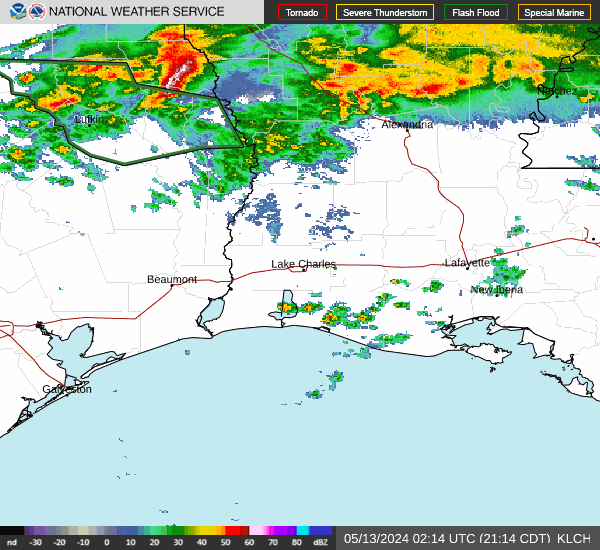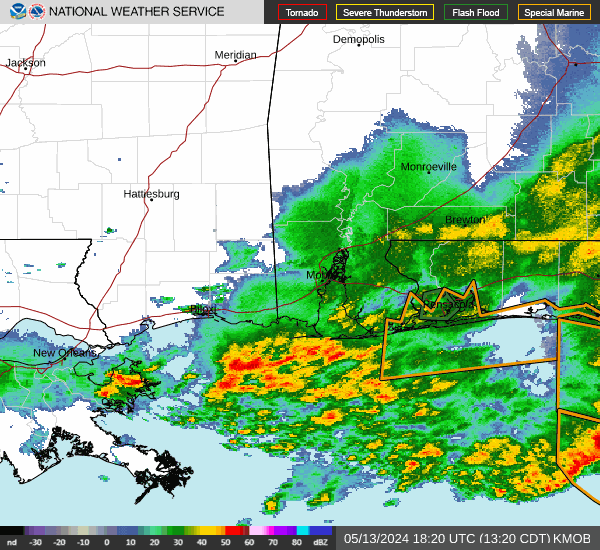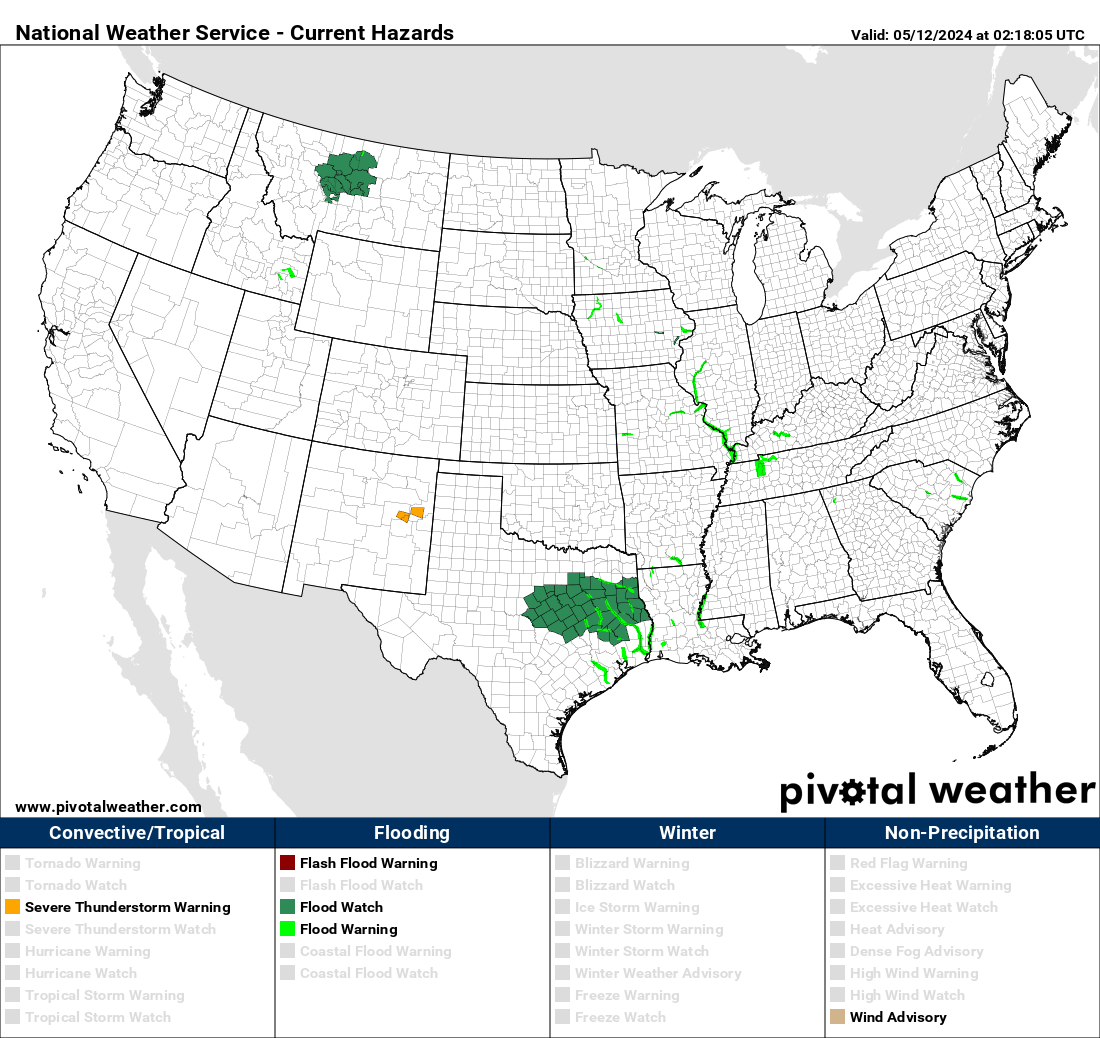Post by Skywarn on Mar 10, 2009 13:27:52 GMT -6
Dr Jeff Masters posted in his blog some notable changes that will be in effect this hurricane season. These changes were brought out at last week's 63rd Interdepartmental Hurricane Conference in Charleston, S.C:
"At last week's 63rd Interdepartmental Hurricane Conference, a number of notable news items surfaced regarding doings at the National Hurricane Center (NHC). Some of these are detailed on the NHC web site, and others I learned by talking to the people at the conference and via emails. Of note:
Saffir-Simpson Scale being redefined
NHC is considering removing any mention of storm surge from the familiar Category 1-2-3-4-5 Saffir-Simpson scale, starting this June. The current definition is primarily based upon wind speed, but storm surge flooding is included as well. The new definition will make the Saffir-Simpson scale exclusively keyed to wind speeds. This change will help pave the way for the proposed Storm Surge Warning, discussed next.
New Storm Surge Warning product proposed
The impact of Hurricane Ike on the Texas coast in 2008 underscored the inadequacy of the Saffir-Simpson scale to characterize storm surge threat. Ike was a strong Category 2 hurricane on the Saffir-Simpson scale, yet brought a storm surge characteristic of a strong Category 3 hurricane to the coast. Very high storm surges in excess of ten feet were recorded along portions the Louisiana coast, in regions that did not get hurricane force winds. The water level rose four feet above normal at Pascagoula, MS, some 170 miles to the east of the eastern edge of the Hurricane Warning, well before that warning was issued. To address these concerns, NHC is considering issuing a separate storm surge warning. This is great idea, but there are a number of major technical hurdles to leap before this product can be made operational. NHC director Bill Read indicated that official storm surge warnings are probably 3 - 5 years in the future. Among the concerns:
1) What level of water qualifies? Should it be different depending on the location?
2) Should a level of certainty be used (e.g., 40% chance of the surge reaching 5 feet?)
3) Would a "storm surge watch" be issued beforehand?
4) The storm surge can stay elevated for several days after a storm passes. How long would the surge warning stay in effect?

Figure 1. Example of how the proposed new Storm Surge Warning and Hurricane Warning areas would have looked for Hurricane Katrina. NHC is also considering unifying the "Inland Hurricane Wind Warning" and Hurricane Warning (currently only issued for the coast) into one unified Hurricane Warning. Image credit: National Hurricane Center.
Expanded lead times for hurricane watches and warnings
Currently, NHC issues a Hurricane Watch 36 hours before the potential arrival of hurricane force winds at the coast, and a Hurricane Warning 24 hours in advance. As early as the 2010 season, it is proposed that these lead times be extended to 48 hours for a Watch and 36 hours for a Warning. This would give increased time for people to prepare, at the expense of warning more people unnecessarily. However, hurricane track forecasts have improved so markedly (50% in the past 20 years, with record accuracy again in 2008) that the number of people being over-warned would not significantly change compared to the 1990s.
Cone of Uncertainty reduced in size
For the Atlantic, official NHC forecasts for track in 2008 were the best ever, for both short range (12, 24, 48 hour) and longer range (3 - 5 days). As a result, NHC will be modestly reducing the size of the "cone of uncertainty" for 2009. Recall that the "cone of uncertainty" is set so that 2/3 of all track errors over the past five years will fall inside the cone. You're definitely not safe if you're in the cone, and 1/3 of the time, storms will deviate outside the cone!
Personnel changes
In response to recommendations made from a panel investigating morale problems at NHC in the wake of the July 2007 revolt by NHC employees against then-director Bill Proenza, a new branch chief position--head of the hurricane forecasters-- has been created and filled. The new branch chief of the Hurricane Specialists Unit is former senior hurricane forecaster James Franklin. He will now devote 80% of his time to administrative matters, and will be performing only one shift per week doing hurricane forecasting. To replace him, NHC has hired Dr. Michael Brennan, who came on board during the tail end of the 2008 season. NHC will be short one hurricane forecaster during the 2009 season, as senior hurricane forecaster Stacy Stewart has been called up for military reserve duty."
Jeff Masters
www.nhc.noaa.gov/pdf/nhc_new_2009.pdf
"At last week's 63rd Interdepartmental Hurricane Conference, a number of notable news items surfaced regarding doings at the National Hurricane Center (NHC). Some of these are detailed on the NHC web site, and others I learned by talking to the people at the conference and via emails. Of note:
Saffir-Simpson Scale being redefined
NHC is considering removing any mention of storm surge from the familiar Category 1-2-3-4-5 Saffir-Simpson scale, starting this June. The current definition is primarily based upon wind speed, but storm surge flooding is included as well. The new definition will make the Saffir-Simpson scale exclusively keyed to wind speeds. This change will help pave the way for the proposed Storm Surge Warning, discussed next.
New Storm Surge Warning product proposed
The impact of Hurricane Ike on the Texas coast in 2008 underscored the inadequacy of the Saffir-Simpson scale to characterize storm surge threat. Ike was a strong Category 2 hurricane on the Saffir-Simpson scale, yet brought a storm surge characteristic of a strong Category 3 hurricane to the coast. Very high storm surges in excess of ten feet were recorded along portions the Louisiana coast, in regions that did not get hurricane force winds. The water level rose four feet above normal at Pascagoula, MS, some 170 miles to the east of the eastern edge of the Hurricane Warning, well before that warning was issued. To address these concerns, NHC is considering issuing a separate storm surge warning. This is great idea, but there are a number of major technical hurdles to leap before this product can be made operational. NHC director Bill Read indicated that official storm surge warnings are probably 3 - 5 years in the future. Among the concerns:
1) What level of water qualifies? Should it be different depending on the location?
2) Should a level of certainty be used (e.g., 40% chance of the surge reaching 5 feet?)
3) Would a "storm surge watch" be issued beforehand?
4) The storm surge can stay elevated for several days after a storm passes. How long would the surge warning stay in effect?

Figure 1. Example of how the proposed new Storm Surge Warning and Hurricane Warning areas would have looked for Hurricane Katrina. NHC is also considering unifying the "Inland Hurricane Wind Warning" and Hurricane Warning (currently only issued for the coast) into one unified Hurricane Warning. Image credit: National Hurricane Center.
Expanded lead times for hurricane watches and warnings
Currently, NHC issues a Hurricane Watch 36 hours before the potential arrival of hurricane force winds at the coast, and a Hurricane Warning 24 hours in advance. As early as the 2010 season, it is proposed that these lead times be extended to 48 hours for a Watch and 36 hours for a Warning. This would give increased time for people to prepare, at the expense of warning more people unnecessarily. However, hurricane track forecasts have improved so markedly (50% in the past 20 years, with record accuracy again in 2008) that the number of people being over-warned would not significantly change compared to the 1990s.
Cone of Uncertainty reduced in size
For the Atlantic, official NHC forecasts for track in 2008 were the best ever, for both short range (12, 24, 48 hour) and longer range (3 - 5 days). As a result, NHC will be modestly reducing the size of the "cone of uncertainty" for 2009. Recall that the "cone of uncertainty" is set so that 2/3 of all track errors over the past five years will fall inside the cone. You're definitely not safe if you're in the cone, and 1/3 of the time, storms will deviate outside the cone!
Personnel changes
In response to recommendations made from a panel investigating morale problems at NHC in the wake of the July 2007 revolt by NHC employees against then-director Bill Proenza, a new branch chief position--head of the hurricane forecasters-- has been created and filled. The new branch chief of the Hurricane Specialists Unit is former senior hurricane forecaster James Franklin. He will now devote 80% of his time to administrative matters, and will be performing only one shift per week doing hurricane forecasting. To replace him, NHC has hired Dr. Michael Brennan, who came on board during the tail end of the 2008 season. NHC will be short one hurricane forecaster during the 2009 season, as senior hurricane forecaster Stacy Stewart has been called up for military reserve duty."
Jeff Masters
www.nhc.noaa.gov/pdf/nhc_new_2009.pdf














